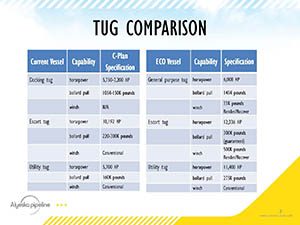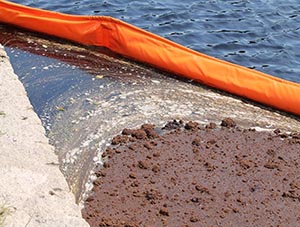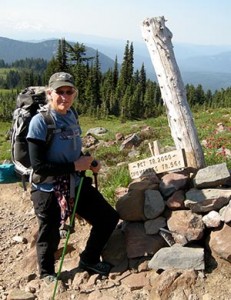Council conducting independent review of vessel designs

By July of 2018, Edison Chouest Offshore, or ECO, of Louisiana will be the marine services contractor for oil tankers and the terminal in Prince William Sound. Until then, Alyeska and ECO will be working with Crowley Maritime, the contractor who currently provides those services, on a smooth transition between the two contractors. These services include escort tugs, general purpose tugs, oil recovery storage barges and associated personnel, all of which are key oil spill prevention and response assets for Prince William Sound. For instance, two state-of-the-art escort tugs accompany every laden tanker that leaves Port Valdez. One tug is tethered through the confined waterway called the Valdez Narrows, and one tug stands by at Hinchinbrook Entrance until the tanker is 17 miles into the Gulf of Alaska. The primary responsibility of these escort tugs is to rescue or “save” a tanker that may experience problems and prevent oil from spilling, and initiate response efforts should these prevention measures fail.
 A group of oil spill preparedness planners in Prince William Sound are working together to develop an improved method of training for oil spills. The council has been working for many years to find a suitable oil “surrogate” for spill response training. Surrogates are floating substances such as wood chips, peat moss, or other materials that would mimic an oil slick and have similar interactions with currents, tides, and winds, without harming the environment. A surrogate would provide a target for responders during training and exercises; something which physically interacts with boom and equipment and acts as a visual aid to help responders increase proficiency with gear and tactics.
A group of oil spill preparedness planners in Prince William Sound are working together to develop an improved method of training for oil spills. The council has been working for many years to find a suitable oil “surrogate” for spill response training. Surrogates are floating substances such as wood chips, peat moss, or other materials that would mimic an oil slick and have similar interactions with currents, tides, and winds, without harming the environment. A surrogate would provide a target for responders during training and exercises; something which physically interacts with boom and equipment and acts as a visual aid to help responders increase proficiency with gear and tactics.